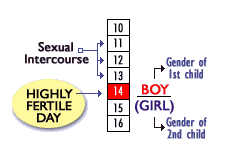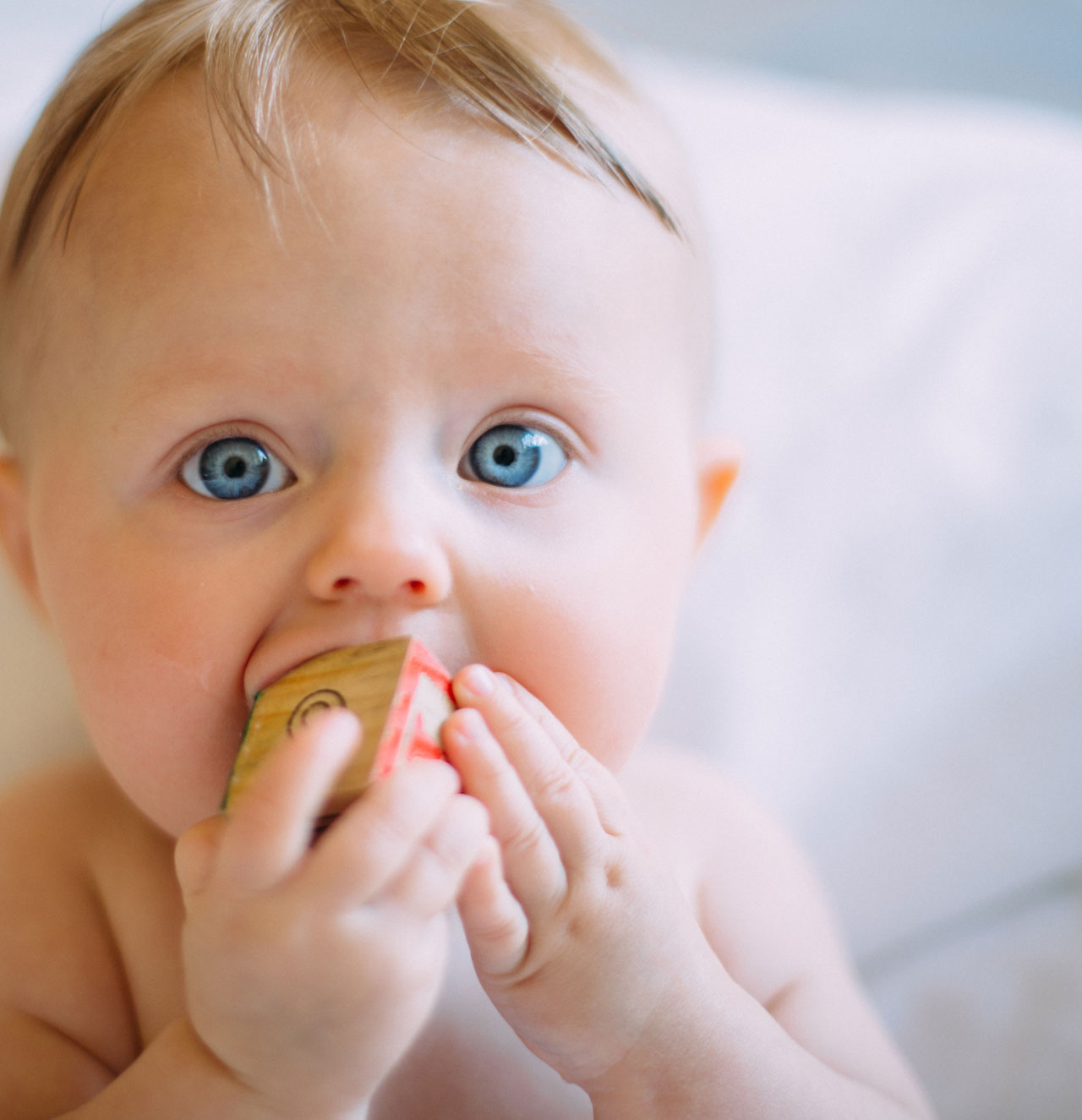"Effectiveness rate of 97.7%..."
(P<0.023), 2.2 in the Pearl Index (Jonas, Rechnitz et all, 1970)
Sex selection offers the chance for a more balanced family and allows your children to feel wanted. A female child who knows that her family wished she were a boy carries an unnecessary burden throughout their childhood. As more parents choose their children with success, there will be more love to go around, less rejection, and a reduction in family size. Many couples have large families simply as the result of perpetual attempts to have a son or daughter. In some cases, there will of course be more tangible necessity to choosing the sex of the child, such as when there is a chance of the child inheriting a sex-related disease.
Using our method, the chances of success are great. Throughout history there have been prescriptions for sex selection. Directions have been given on how to conceive a child of both genders, and although the actual spread of the sexes is fairly even, the longer life that women can expect, in most cultures, infant women's lib has been a long time coming!
Dr. Jonas has discovered that under certain circumstances the bio-chemical environment of the endometrium is subject to certain periodic variations and that these in turn lead to sedimentation of the sperm. Our method teaches that there are some days in woman's fertility cycle where she can conceive a BOY only and days where only a GIRL can be conceived.
These days depend on the accuracy and the completeness of the mother-to-be's data and are completely individualized. We can pinpoint her highly fertile days for BOY or for GIRL conception not only for the next pregnancy but also for the next TWO pregnancies or more. This allows couples without children to plan their TWO future children's gender in advance. You can pre-select the first child's gender, and at the selection of the first child's gender, you can also can plan the gender of your second child or subsequent children.
 The calendar, which is prepared for a subsequent year, shows the gender of the fetus (boy or girl) next to the red days. There may be rare cases where instead of the child's sex, only a horizontal line will be shown. This means that it is very difficult to determine the gender with certainty; we therefore recommend opting for the subsequent terms.
The calendar, which is prepared for a subsequent year, shows the gender of the fetus (boy or girl) next to the red days. There may be rare cases where instead of the child's sex, only a horizontal line will be shown. This means that it is very difficult to determine the gender with certainty; we therefore recommend opting for the subsequent terms.We will ask you to choose a red (highly fertile) day of the gender you desire. This is the day in which the planned child should be conceived. In order to conceive on this day, sexual intercourse should occur one day before this fully red colored day, as well as during the other two (2) preceding days which combine the 3-day period preceding the red day marked with the desired gender. (It does not matter whether the intercourse occurs once or several times during the day.)
If you have decided to have a BOY, you can use all dates for a BOY until the conception has been proven by a gynaecological examination. (That is, the last menstruation is not decisive.). After the verified pregnancy, you should avoid unprotected sexual intercourse during all subsequent red days to prevent accidental conception. (There have been cases, namely, when in advance pregnancy additional conception occurred, especially during the calculated red days).
 If the planned day for conception falls within the period of monthly menstruation, the conception can also occur.
If the planned day for conception falls within the period of monthly menstruation, the conception can also occur.  All pregnancies are counted. First child means first pregnancy, second child means second pregnancy.
All pregnancies are counted. First child means first pregnancy, second child means second pregnancy. If all the data you will provide us with will be correct and complete you will be able to plan the gender of your TWO or more children in the pre-conception stage.
If all the data you will provide us with will be correct and complete you will be able to plan the gender of your TWO or more children in the pre-conception stage. The sex of the next planned child is marked in the calendar ABOVE the line. The gender of the child, which can be planned for the period SUBSEQUENT to the next pregnancy, is marked in the calendar BELOW the line in the brackets.
 All pregnancies are counted. If you have been pregnant before, the mark "first child" refers to your next planned pregnancy, and the mark "second child" means the subsequent pregnancy to the next one.
All pregnancies are counted. If you have been pregnant before, the mark "first child" refers to your next planned pregnancy, and the mark "second child" means the subsequent pregnancy to the next one.News! News! News!
....only now scientists had found what Dr. Jonas confirmed in his clinical trials 47 years (!!!) ago...
(Reuters) - No wonder the rhythm method does not work so well for birth control -- scientists in Canada said they had found women sometimes ovulate several times in a single month.
Their finding, if verified, would overturn the traditional wisdom that women produce an egg cell once a month. It would also help explain why "natural" methods of birth control, based on the idea that ovulation can be predicted, often fail.
"We are literally going to have to re-write medical textbooks," said Dr. Roger Pierson, director of the Reproductive Biology Research Unit at the University of Saskatchewan, who led the study.
"It's exactly why the rhythm method doesn't work."
Scientists have long known that humans have unique cycles of ovulation. Many animals come into heat -- a time when all the males around know through smells and visual signals that a female is ovulating and ready to conceive.
Not so with humans, who have "concealed" ovulation.
Standard medical science says a woman has a cycle running roughly 28 days in which an egg ripens, is released by the follicle, drops into the fallopian tube, and then is either fertilized or shed during menstruation.
Writing in the journal Fertility and Sterility, Pierson and colleagues found this did not always happen.
"We weren't expecting this. We really weren't," Pierson said in a telephone interview.
In the study, Pierson, veterinarian Gregg Adams and graduate student Angela Baerwald did daily, high-resolution ultrasound scans on 63 women for a month, which allowed them to see the follicles very clearly.
"We had 63 women with normal menstrual cycles. Of those 63, only 50 had normal ovarian cycles," Pierson said.
Thirteen of the women ovulated multiple times, in various different ways. And of the other 50, 40 percent had up to three waves of activity by the follicles, any one of which could result in the production of an egg.
The women's hormone levels did not match this activity, Pierson said. "Hopefully this will help women explain how they got pregnant when they really didn't want to be pregnant, and it certainly will help us design better fertility therapies."
Apparently, measuring hormones in the blood is not enough to predict what a woman's reproductive system is up to.
"The hormones do what they are going to do and the ovaries just follow their merry path," Pierson said.
"We always thought that menstrual cycles and ovarian cycles were one and the same. It turns out they are just like two political parties -- sometimes they go along hand in hand for the good of the country and sometimes they go along their separate ways."
Pierson's team plans longer-term studies to see if the women's patterns are consistent from month to month.
"We don't know what's causing it -- we don't know if it is the weather or exposure to men or grapefruit juice or what," Pierson said.
The findings, which were first seen in cattle and horses, help explain some things that have puzzled obstetricians, Pierson said.
"It really explains how we get fraternal twins with different conception days," Pierson said. "Clinically, we see this all the time. We see women come in with twins and when we do an ultrasound we see one is at one 10 weeks development and another at seven."


